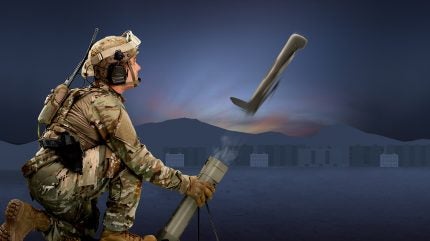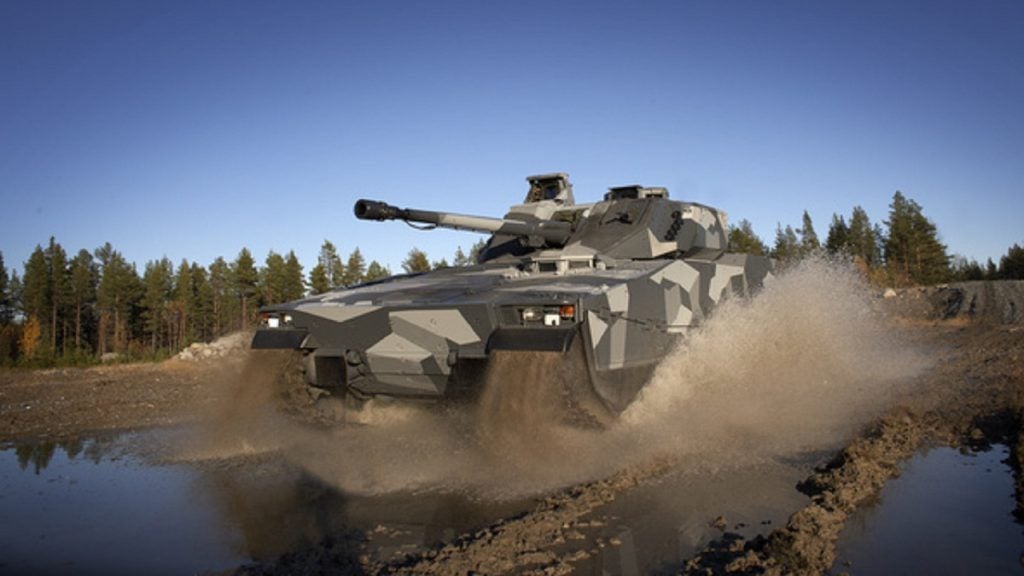
In an interview with Army Technology, Brett Hush, Sr. VP and General Manager for Loitering Munition Systems for AeroVironment discusses the strategic implications of the recent US approval to supply Switchblade loitering munitions to Taiwan, highlighting enhanced defensive capabilities and future developments in military technology for the Switchblade munition.
Between 2022 and 2032, Asia-Pacific is set to account for the largest share of the loitering munitions market at 59.7%, according to GlobalData’s intelligence on the global military unmanned aerial vehicles (UAV) market.
How well do you really know your competitors?
Access the most comprehensive Company Profiles on the market, powered by GlobalData. Save hours of research. Gain competitive edge.

Thank you!
Your download email will arrive shortly
Not ready to buy yet? Download a free sample
We are confident about the unique quality of our Company Profiles. However, we want you to make the most beneficial decision for your business, so we offer a free sample that you can download by submitting the below form
By GlobalDataHarry McNeil (HM): Can you provide an overview of the Switchblade loitering munitions and their primary uses in modern military operations?
Brett Hush (BH): Switchblade 300, in various versions, has been around for more than a dozen years, delivered primarily to US special forces, the US Army, the US Marine Corps, and a few US allies. It was initially developed as a backpackable-only solution to respond quickly to troops in contact and give an overmatch capability. What was studied over time was that when US forces have troops in contact, the highest probability of injuries or casualties is when that contact happens. Switchblade gave an overmatch capability that the adversary didn’t have beyond the line of sight. The US Army procured over 6000 Switchblade 300s. Over the years, we have evolved and improved that system, primarily as an anti-personnel weapon. We have improved that in its latest version, which takes it now out to 30km 3x the existing and longer duration because of battery technology that has evolved better optics. More intuitive controls, a touch-to-target tablet, and an EFP explosively formed penetrating warhead allow us to take out all sorts of armoured vehicles, with the exception of a main battle tank.
Now, an individual operator with something that weighs less than six pounds can go out 30km and take out potentially Russian BMP VTR. We believe it’s game-changing. The US Army continues to procure Switchblade 300s despite articles stating the contrary. The future for Switchblade 300 is very, very bright. Hence, the recent announcement of an FMS case and one to two dozen FMS cases are in the works for Switchblade 300. Taiwan has been announced regarding approval for over 700, switchblade 300, which we think is just the start we have with Taiwan. We’re ready, and our production is at a good rate right now. We will be delivering it once Taiwan’s contract is awarded. We will probably deliver within 60 to 90 days, starting deliveries for those which will go very quickly.
(HM): Could you discuss the Switchblade 600 and its applications?
(BH): Switchblade 600 started from a US SOCOM special user group that came to us several years ago and said, ‘I want everything switchblade 300 can do because I’ve been using it operationally, but I want to be able to go out longer distances at a time’. It was 25km they wanted to go and to have an anti-armor capability. Switchblade 600 has been developed and is in production right now for pre-production for our SOCOM customers and Ukraine. Ukraine Defense Forces have put out many videos showing Switchblade 600 taking out some of Russia’s most valuable electronic warfare and integrated air defence systems, extremely rare assets that their adversary has.
(HM): How does the recent approval for Taiwan align with AeroVironment’s strategic objectives?
(BH): From our perspective, Switchblades are highly controlled by the US Department of Defense. This new category, especially loitering munitions, has been very restrictive for many years. We have seen the export policy opening up, certainly since the Russian invasion of Ukraine in February of 2022. We’re getting more and more approvals and openness from the US government to allow this technology to go to all of our closest allies. We envision strategically that there will be 50 or so countries that we would be allowed to export Switchblade to. It’s only through foreign military sales, not direct commercial sales. The problem is being able to defend against it if it gets into the wrong hands. This category of weapons system, which is so portable and small, has challenges to defend against.
(HM): What specific capabilities do Switchblade loitering munitions offer that will enhance Taiwan’s defensive posture?
(BH): I think what Switchblade loitering munitions bring to the table for Taiwan is that the threat is not a static position on the ground; the threat will be many surface boats moving. You have to be able to continually track and engage the target and engage the target in what will likely be a very contested RF environment. Because of Ukraine, our capabilities have evolved even faster over the last couple of years. If you wanted to attack these boats moving traditionally, you might have an aircraft or a manned or unmanned laser designate something and then launch a hellfire, but its range could only be 6 or 7km away. With the Switchblade 600 and 300, we can do that thirty or fourty kilometers away. You can engage those targets, and then the operator can see them and designate them once they are designated hands-free.
(HM): Are there any plans for further enhancements or new versions of the Switchblade systems that might be relevant to future acquisitions by Taiwan or other US allies?
(BH): On our product roadmap, we are integrating a visual NAV solution. We’re currently using several different methodologies. One of those is visual odometry as an alt NAV solution. The other one is automatic target recognition. Today, if you can communicate with the missile and identify a target at a certain distance, it will lock on like an IR seeker, a traditional hellfire missile or another type. But ATR gives us another level of precision and robustness when you’re using the commlinks archive. I hate the term personally swarming because it’s so generic – what’s your mission? What are you trying to do?
In many cases, you may want to control things that are heterogeneous-type swarms so that you might have an ISR, and then you might have a precision strike. However, cooperative engagements, in which one operator can control multiple things, are essential to future fights. We are developing those solutions. When we go to mass, it can’t be one person, one missile, one person, one UAV. It has to be a force multiplier.








